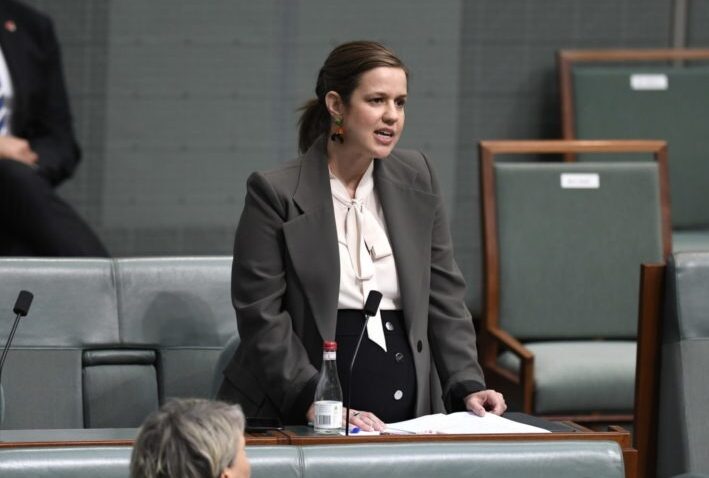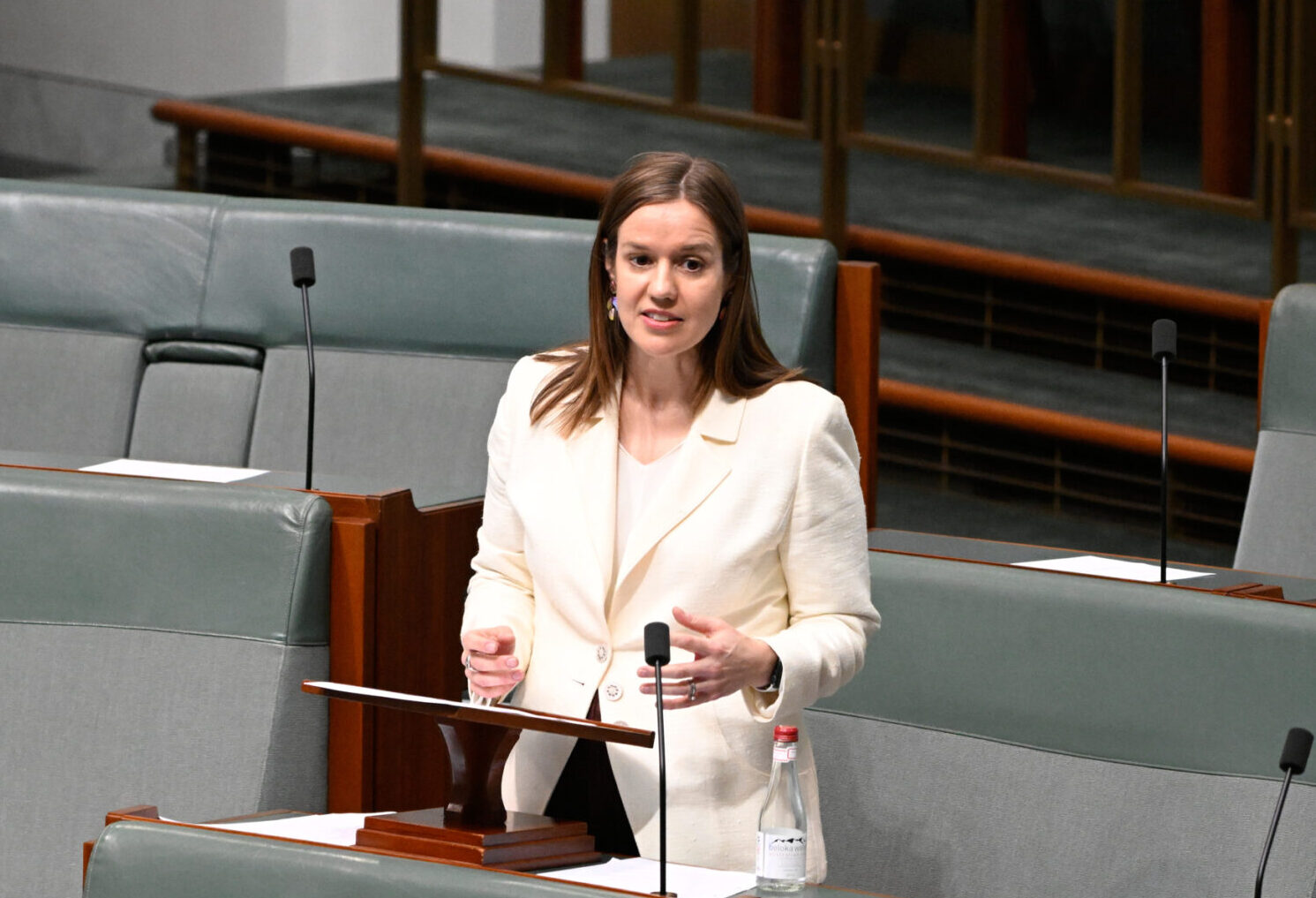This Offshore Electricity Infrastructure Bill 2021 really reflects so much of the Morrison government’s approach to climate policy. It’s very late, and while this government has been dithering and playing political games—coming up with slogans—Australia has been missing out on the potential that offshore wind energy offers us in contributing to our energy needs, reducing our emissions and creating jobs. So it’s good that this bill is finally here, albeit late. But the regulatory framework for Australia’s offshore wind industry has been so delayed that vital projects and jobs remain mired. Labor has long called for legislation to unlock the benefits of offshore renewables, particularly offshore wind generation, because we know that we have enormous capacity here in Australia for offshore wind generation.
As well as that generation capacity, offshore wind offers us thousands of jobs and billions in investment for regional communities, including—and especially—for those which are most impacted by changes in global energy markets. So it’s shameful that these benefits have been delayed by this government. Those opposite had promised to aim that the legislative settings and framework for this would be in place and operational by mid 2021. Instead, we are belatedly getting the introduction of these bills, and we know that it will most likely take well into next year for them to be implemented. As I said, this reflects so much of the slowness around this government’s climate policy and its attitude towards tackling climate change.
I did hope, like so many in our country hoped, that this week would be different. We thought that this was the end of the more than a decade-long climate war; the end of eight years of inaction from this government and the end of slogan and spin—that we would have a result after all the bluster and noise that was coming out of the Nationals. But we were wrong. Let’s be very clear about what we got out of the Prime Minister’s big climate reveal yesterday: it was not a plan; it had no ambition. We got a pamphlet and we got some slides, not a plan—no legislated target and none of the increased ambition we need to avoid catastrophic warming.
I do admit that there was one new part in yesterday’s climate reveal: we did get some new slogans, and we do know that this is a prime minister who loves a good slogan. In fact, that’s all this Prime Minister thinks it takes. He has no interest in grabbing hold of the jobs, the industries and the potential of the future, or of grabbing hold of the action that we need to take to make sure that our entire country benefits from it. He has no genuine commitment to net zero and the action we need to take to avoid catastrophic warming. In fact, how can he have any sort of genuine commitment when we look around him and see the balance he’s trying to bring and the coalition he’s trying to stitch together? His own Deputy Prime Minister has said that he doesn’t believe in net zero—that’s the Deputy Prime Minister who is going to be in charge when the Prime Minister takes off for Glasgow tomorrow. In fact we just heard in estimates questioning that this government has not had Treasury do any modelling on the economic costs or benefits of net zero by 2050, or indeed any modelling of climate-change-related impacts on the Australian economy—none at all! That says everything we need to know about the Prime Minister’s commitment and about his government’s commitment to genuine action on climate change; they’re just not serious. But this is serious. It has been too long; it has been a political game to this Prime Minister and his government for far too long. This is not a political game. Under this government, this country has wasted so much time and we’re now out of time to waste.
Australia should be a renewable energy powerhouse and, of course, wind, including offshore wind, should be a big part of that. Just as with solar, we should be a wind superpower. We have one of the longest coastlines in the world. We have some of the best wind resources in the world. Anyone who’s visited any of the coastline down in Victoria, where I’m from, would know that we have some very windy coastlines in our state.
Across the country, we have more offshore wind resources than we could actually use to supply our domestic market. Recent research by the Blue Economy CRC indicates feasible wind resources of 2,223 gigawatts of capacity off Australia’s coast. In fact, our entire national energy market is around 55 gigawatts. So there’s room for this offshore wind energy capacity not just to help Australia with our energy needs and our transition to renewable energy but also to be an export for our country and for us to be able to help other countries as well as grow industries.
Of course, because we’re so late, the rest of the world has already moved on this. In fact, it was UK Prime Minister Boris Johnson who said that in 10 years time ‘offshore wind energy will be powering every home in the country’. In the UK, they already have the world’s largest offshore wind generation capacity, and in October 2020 the UK government announced a target of 40 gigawatts of offshore wind capacity by 2030, up from its original target of 30 gigawatts by 2030.
So the rest of the world is ahead of this government. Energy providers here in Australia are ahead of this government. They know the capacity that’s there in our offshore wind. They’ve just been waiting for this government to catch up and bring some legislation that allows them to harness that. There are more than 10 projects that have been waiting on the government bringing on this legislation so that they can get on with the job, and these projects have massive capability. Again in my home state of Victoria, Star of the South, which will be off Gippsland, will produce enough energy to cover 20 per cent of our state’s current energy needs. That is huge. A single turn of an offshore wind turbine can provide as much energy as a whole day’s worth of rooftop solar.
Some of the best wind resources are located just off the coasts of the regions that have powered our country and built the industries that have powered our country for generations now. These regions include Gippsland in my home state; the Hunter Valley, including Newcastle, which the member for Newcastle has just spoken about; the Illawarra; and Central Queensland, including Gladstone. These regions have all the things that support these offshore wind generation: the strong electricity grid infrastructure, the ports, the railways and the populations for new energy and new industries. It is striking that the proposals for offshore wind that we are seeing come forward in this country—the proposals that are ready to be unlocked once this government gets its act into gear—are in our traditional energy regions, because of this strong connection they have to the electricity grid and because of the infrastructure they already have in place.
So it’s these communities and these workers that have the most to gain from a thriving offshore wind energy industry. They will create the energy that will benefit all of Australia, but they will create the jobs that will benefit the regions and all of Australia as well. It’s not just putting in place offshore wind infrastructure; it’s the turbines that need maintenance and the network of ships and ports that are required for that maintenance. From a government that likes to talk up technology, not taxes, it’s really disappointing to think that we’ve had to wait so long for this legislation, which allows us to unlock all of that potential.
Labor does support this legislation and its aims. The bill establishes a regulatory framework for electricity infrastructure in the Commonwealth offshore area; it allows the construction, installation, commissioning, operation, maintenance and decommissioning of offshore wind and other electricity infrastructure; it allows the energy minister to declare a certain area as suitable for offshore electricity infrastructure; and it establishes licence schemes for offshore electricity activities. As I said, Labor supports these aims. We are concerned that they’ve been too slow in coming and, again, that they are not as comprehensive as they should be. That’s why I support the amendments that have been moved by the member for McMahon.
I make it clear once again that we must move quickly on this. Industry is ready. The rest of the world is moving. It is time for Australia to catch up. This is long overdue, like most of the government’s climate efforts. Let’s not make offshore wind energy the other part of the puzzle that slips by this country because we’ve got a government that is focussed on slogans and a political game and is not actually focused on what will create the jobs of the future and what will make sure that our country transitions to net zero 2050 with a credible, actual plan to get us there. The IPC report makes it very clear that the window to act on climate change is closing. If we don’t take significant action now, we miss that window and the consequences for all of us are dire. We will not limit warming to the level that we need for us all to have a future. That is a real consequence for all of us. And, of course, there are immediate economic consequences as we get locked out of the jobs and industries of the future—the jobs and industries of the future that we should have right now in this country. But we don’t, because we get slogans rather than plans and commitments.
In my community, the No.1 issue people raise with me is the need for genuine action on climate change, and they are not going to be bought off with a slogan. They are very clear that this country needs to transition—it needs to transition with the jobs and industries of the future, and it needs to transition so that we keep warming within acceptable levels for us all to have a future. We still haven’t seen the plan, the commitment, from this Prime Minister and this government that allows my community and the rest of Australia to be assured that that’s where we’re heading.
In contrast, of course, Labor is very clear that we are committed to net zero by 2050. There are no quibblers on our side—no-one who accepts the party room decision but actually tells the media they don’t back it. We have plans in place. We have a new energy apprenticeship program to train 10,000 young people for the energy jobs of the future. We want to make electric vehicles cheaper by cutting input and fringe benefit taxes and developing Australia’s first national electric vehicle strategy. We want to invest in community batteries. We want to fix and modernise the electricity grid, with $20 billion to rewire the country.
We know that you don’t just do this work with a pamphlet. You do this work with commitment, with thoroughness and with the policies that back it up. We continually fail to get those policies and get that commitment from those on the other side. We don’t have more time for political posturing, games and slogans; it is time for action. I say to my community: I continue to hear your voices on this. I know you’re not satisfied with what’s come out of this government this week. I will keep fighting for our country to do more—to do what we have to do—to tackle climate change and get us all the future we deserve.

